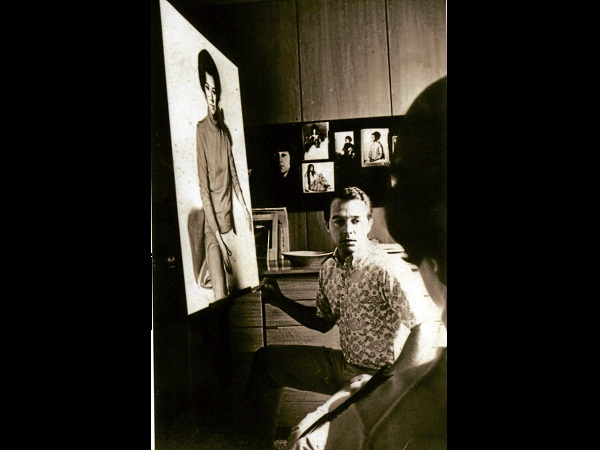
On Sept. 18, after a year-and-a-half preparation for the retrospective of the works of Chilean artist Claudio Bravo, the exhibit “Claudio Bravo: Sojourn in Manila” will finally open.
In the year that was, I did a lot of research and interviews with those he painted. I scrutinized each and every portrait, reading the two giant monographs of his work, rejoicing in online technology for even more information—all of which has brought me a dollop of nostalgia for that one time I met this artist face to face.
31 years ago
Coincidentally, I had met Bravo around this time of the year. It was in Tangier, Morocco, 31 years ago, late August or early September 1981. He was at the time an artist in demand, represented by Marlborough Gallery in New York, having made his mark with his paintings of crumpled paper, tied packages, still-lifes, portraits of ordinary people in everyday situations, or inspirations of Greek and Roman mythology, characteristically baring his classical influences.
Up until then, my exposure to his work was limited to the portraits he had done of my parents-in-law, Constantino and Elvira Manahan; my brother-in-law Bonggoy; my young niece Samantha; and Don Luis Araneta. Thirteen years had passed since he came to Manila and painted these portraits along with some other prominent Filipinos. He was then a well-known portrait artist in Spain where he had lived since the early ’60s, after moving from his native Chile.
The evening before my husband, myself and a 40-strong troupe of performers and musicians were leaving for a callback performance for King Hassan II of Morocco, which we amusingly referred to as “The Royal Command Performance” because of our initial reluctance to do the project, my mother-in-law and Don Luis handed us a piece of paper with an address and a phone number: 49 Rue du Village, Tangier, tel. 34-805.
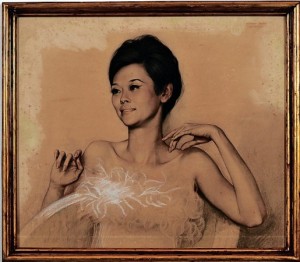
“See if you can find Claudio Bravo and give him our regards,” they instructed us. We told them we were headed for Rabat, where the king held court, and the chances of our going to Tangier were slim. Nevertheless, I wrote the address in my book. But by some twist of fate, we did end up in Tangier, performing for then Prince Fahd of Saudi Arabia, upon the request of His Majesty Hassan II.
Beautiful city
Tangier is a beautiful city, referred to as the “white city” because of its lime-washed buildings and residences that have, over the years, attracted a slew of European and American artists. Foremost of these was American writer Paul Bowles, whose work “The Sheltering Sky” evolved into an unforgettable film with Jack Nicholson.
Eugene de la Croix and Henri Matisse were not spared Tangier’s mythical charm. Claudio Bravo wasn’t either, perhaps also because it is the Spanish-speaking part of Morocco.
The cliffs that overlook a breathtaking view of the Straits of Gibraltar, the exotic gene pool of Eastern and Western features in its people, the vibrant colors that leap out in the whiteness of light were perhaps just a few reasons he stayed in Tangier for four decades and even died and got buried there.
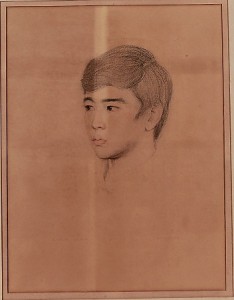
Back to my story: Browsing around the print and antique shop of Spanish artist-designer Adolfo de Velasco, I overheard him speaking to one “ Claudio” on the phone. After introducing myself, I asked if he happened to have been speaking to Claudio Bravo. Reluctantly, and with eyebrows arching and nostrils flaring, he replied, “Yes,” and proceeded to dial what I presumed to be the number 34805.
In heavily accented English, he said: “There is a young ghel who says she might know you… Manahan is her mother from the Philippines. Oh, you know?!” And he suspiciously handed me the phone. Sounding excited, Bravo instructed us to go back to our hotel, the Minzah, where he would have us picked up.
Vast living room
Shortly before noon, Bravo’s car came for us, chauffeured by a young Moroccan named Bashir. After driving along tight and twisted alleys, the car suddenly stopped in front of a nondescript lime-washed building with a majorelle blue door, that typical blue of Morocco. We were led up a steep and narrow stairwell that led to the first floor, which was a vast white living room expanse filled with large white sofas with fat cushions, white leather Moroccan poufs and many of those sheep-shaped stools of Jacques Lalanne which I had seen so far only on a spread of Yves Saint Laurent’s Marrakech home on the pages of Architectural Digest.
Up another flight of steep steps and we were ushered into Bravo’s atelier, so unlike what one would expect from an artist: It was neat.
Brushes were piled into brush pots, and even the paint-loaded rag was purposefully draped on some sort of stand. The floor was spotless, as were the walls, devoid of any paint splotches characteristic of typical artists’ workstations.
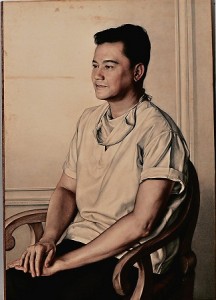
A large canvas of a work-in-progress stood at the center of the room. Across where we stood were Moorish arches that framed the Straits of Gibraltar. Looking down from the arches, we could see a perfectly manicured garden. Running its whole length was an Olympic-size lap pool, and galloping around it were two giant dogs whose breed we couldn’t make out from above.
Pristine in white
It wasn’t long before Claudio Bravo made his appearance, pristine in white pants and a white shirt (as were his shoes, I think). Jovial and warm, he greeted us with hugs and smiles, even if this was the first time he ever met us. In 1968 when he came to Manila, my future husband was off at school in San Francisco and I was barely out of high school, oblivious to the circumstances of what I would be working on 31 years hence.
He was not at all what I had expected, having seen the 1970 exhibit invitation he sent my mother-in-law—a nude self-portrait posed as the Vitruvian man!
He took out a wooden Tabacalera box and opened it, showing us thumbnail pictures of the portraits he did in Manila. Holding my mother-in-law’s photo, he said that he never finished her portrait because she couldn’t sit still. He paused as he showed us the picture of a lady whose portrait had a fuchsia background. As he tried to recall her name, he told us that she was one of the most beautiful women he met in Manila and that he called her the spider lady. That was the first time I saw Imelda Cojuangco’s portrait.
Right color
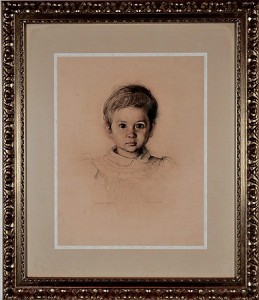
A lunch of shrimp and vegetable frittata was served, and as we ate, he proceeded to paint the large unfinished canvas. Soon, the man who chauffeured us, Bashir, came out dressed in a loincloth and then held a pose. We later learned that a lot of the human subjects he painted were members of his household staff, and Bashir was not an exception.
Then he took notice of my red shorts and shirt outfit and decided that this was the right color for the dress of one of the women in the portrait. In his work called “Bachannal,” painted in 1981, the red shade of my outfit is recreated in the dress of the woman holding up a glass flacon to the right, and Bashir is depicted as a satyr to the left of the painting, pouring wine from a glass vessel.
Later, he showed us yet another painting that he was sending off to the Marlborough Gallery in New York titled “Minerva and Arachne,” his tribute to the Greek myth about the spider. He must have had a thing about spiders.
Time passed quickly and by mid-afternoon we had to leave for yet another royal command performance that night, which consisted of two back-to-back shows that went well into the rising of the sun. After royal performances in several Moroccan cities for almost a month, it was almost time to go.
No ‘photo-ops’
Looking back, we discovered we did not take any “photo-ops” with Bravo. There were no phone cameras then, no lightweight digital anything, save for a brass-bodied Nikon camera that weighed more than a designer bag with metal accessories.
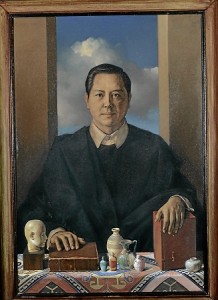
We arrived in Manila on the same night as my father-in-law’s birthday dinner, driving straight from the airport to his house. And just as it was the night before we left, my mother-in-law and Don Luis were there, this time eager to find out if we did meet up with Bravo.
It’s funny that the day after the Claudio Bravo exhibit opens is my father-in-law’s centennial birthday celebration. There must be something in the stars.
The author is curator for the exhibit “Claudio Bravo: Sojourn in Manila” at the Metropolitan Museum from Sept. 18 to Oct. 22. She also co-authors the book-catalogue of the same title with Cid Reyes.












































